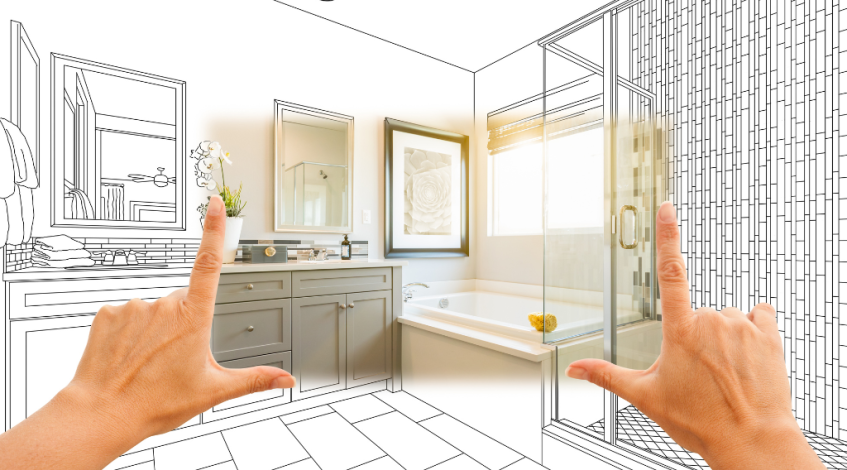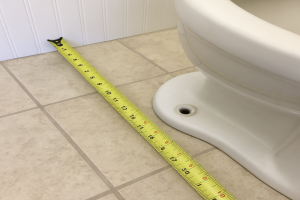Transforming your bathroom can feel like an exciting yet overwhelming task. Whether you’re aiming for a sleek modern look or a cosy traditional vibe, a well-planned renovation can elevate your space and add value to your home. But where do you even begin? From choosing the right materials to setting a budget, there’s a lot to consider.
Planning your bathroom renovation
Effective planning ensures your renovation meets both functional and aesthetic goals. Prioritising key aspects like budget, goals, and scheduling streamlines the process.
Setting a budget
Determine your total expenditure limit before starting. Analyse material costs, labour charges, and potential additional expenses like plumbing adjustments. Allocate 10-15% of the budget for unexpected expenses. For instance, premium tiles or bespoke fixtures may require additional funds. Use detailed cost estimates to avoid overspending.
Defining your goals
Clarify the purpose of your renovation. Focus on primary needs such as increasing storage, improving lighting, or upgrading fixtures. Decide if the design leans towards a luxurious spa-like environment or maximised practicality for a family space. For example, a walk-in shower could match a modern aesthetic, while double sinks cater to shared usage.
Creating a timeline
Develop a realistic timeline to guide your project. Start by identifying key phases like design finalisation, material procurement, and installation. Ensure adequate lead time for custom orders or deliveries. For example, ordering bespoke cabinetry may take 4-6 weeks. Align contractors’ schedules with milestones to minimise delays.
Choosing your bathroom layout
The layout defines how functional and aesthetic your bathroom will be. Selecting the right arrangement ensures an efficient and visually appealing design.
Understanding different layout options
Familiarise yourself with common layouts to identify one that suits your needs. Single-wall designs, with all fixtures lined up on one wall, work well in small bathrooms. Galley layouts feature fixtures on two opposing walls, maximising efficiency in narrow spaces. Full-bath layouts, typically square, accommodate a bath or shower, sink, and toilet, offering balance in medium to large bathrooms. En-suite layouts connect directly to a bedroom for added privacy, with designs varying based on available space.
Custom layouts, which factor in irregular or expansive spaces, let you tailor your bathroom design. Opt for this option if existing configurations don’t meet your functional requirements.
Making use of available space
Optimise every inch of your bathroom to enhance its usability. For limited space, choose compact fixtures like wall-mounted sinks or corner toilets. Integrate vertical storage, such as shelves or cabinets, to declutter counters and floors. Shower enclosures with sliding doors conserve space, making small bathrooms feel spacious.
For larger bathrooms, consider dividing the area into functional zones. Include separate wet and dry areas to reduce maintenance and improve organisation. Use freestanding fixtures, like a bathtub or vanity, as focal points to create a luxurious atmosphere.
Selecting materials and fixtures
Choosing the right materials and fixtures ensures both functionality and a lasting visual appeal in your renovated bathroom. Focus on durability, style, and practicality while making selections to achieve balanced results.
Choosing durable materials
Durable materials resist moisture, wear, and scratches, making them ideal for bathrooms. For flooring, choose porcelain or ceramic tiles as they’re water-resistant and easy to maintain. Natural stone is another option but requires sealing to prevent damage. In high-humidity areas, consider moisture-resistant paint or PVC panels for walls. For countertops, quartz or granite performs well under frequent use.
Avoid materials vulnerable to water damage, such as untreated wood or inexpensive vinyl, as they deteriorate quickly in damp environments. Always check manufacturer ratings for durability when considering options.
Picking the right fixtures to suit your style
Bathroom fixtures combine functionality and design, enhancing your space’s overall appearance. Opt for chrome or stainless-steel taps for a modern look, while brass or brushed nickel adds timeless elegance. Freestanding tubs and vessel sinks suit luxurious setups. Wall-mounted fixtures, such as taps and toilets, maximise space in compact bathrooms.
Coordinate fixtures with your design palette. For traditional designs, consider rounded shapes and classic finishes. For contemporary spaces, choose clean lines and minimalist designs. Always verify product dimensions to ensure compatibility with your layout before purchasing.
Hiring professionals VS. DIY
Choosing between hiring professionals and DIY impacts the outcome, cost, and time of your bathroom renovation. Understanding when to seek expert help or handle tasks yourself ensures better planning and results.
When to hire professionals
Consider hiring professional bathroom plumbers for complex tasks requiring specific skills or compliance with regulations. Plumbing, electrical work, and structural modifications demand expertise and may need proper certification to meet building codes. Engaging licensed tradespeople prevents costly errors and ensures safety standards.
Large-scale renovations also benefit from specialist contractors. For example, if your project involves relocating plumbing lines, intricate tiling patterns, or installing custom fixtures, professional input guarantees precision. Professionals also handle unforeseen challenges effectively, ensuring timely completion and quality workmanship.
Time constraints are another factor. If your renovation must adhere to a strict schedule, hiring contractors expedites project completion.
Assessing tasks for DIY renovations
DIY can save money when skills match specific tasks. Non-technical jobs like painting walls, assembling flat-pack cabinetry, or installing pre-cut shelves can be done independently. For instance, applying new paint allows you to personalise your space without involving tradespeople.
You must evaluate the tools and knowledge required for each task. Attempting advanced processes like waterproofing or grout application without expertise can lead to repairs later. Prioritise safety by opting out of tasks involving electricity or hidden plumbing systems.
Budget considerations also influence the DIY approach. Purchasing mid-range fixtures or sourcing materials may reduce labour costs, but extra time and effort may offset these savings. Select manageable tasks that won’t compromise the project’s overall quality or completion time.
Budget-friendly renovation tips
Reducing costs during a bathroom renovation doesn’t mean compromising on quality or style. By making strategic choices, you can transform your space within a modest budget.
Reusing existing fixtures
Updating your bathroom can be economical by retaining and reusing existing fixtures. Assess the condition of items like bathtubs, sinks, or toilets. For example, consider refinishing a tub instead of replacing it, which costs significantly less. Repurpose functional vanities with a fresh coat of paint or updated hardware to align with the new design. Keep plumbing layouts unchanged, as altering them can involve substantial additional expenses. Cleaning or polishing fixtures, such as taps and mirrors, rejuvenates them without incurring replacement costs.
Smart shopping for materials
Choosing affordable, durable materials helps achieve quality results without overspending. Compare prices at discount stores, online retailers, and local reclamation centres for materials like tiles or wood. Opt for cost-efficient options, such as ceramic tiles instead of natural stone, which still provide sophisticated finishes. Buy materials in bulk where possible, as suppliers often offer discounted prices on large orders. Look for sales or clearance items on high-quality materials to maintain both aesthetic appeal and durability.
Avoiding common renovation mistakes
Even with thorough planning, bathroom renovations can encounter pitfalls that affect the final outcome. Addressing common mistakes ensures a functional and long-lasting design.
Overlooking ventilation
Proper ventilation prevents moisture build-up and reduces the risk of mould. Install an extractor fan suitable for the bathroom’s size and usage frequency. Ensure it’s vented outside, not into another space, to maximise effectiveness. In small bathrooms, consider additional measures like a window or a humidity-sensitive fan for enhanced air circulation. Ignoring ventilation causes structural damage, compromises air quality, and increases long-term repair costs.
Ignoring long-term maintenance
Choose materials and fixtures that simplify cleaning and upkeep. Avoid porous surfaces, such as natural wood or unsealed stone, which are prone to water damage. Install grout-free wall panels or opt for large tiles to minimise maintenance over time. Select durable finishes like brushed metal, which resist fingerprints and stains, especially in high-traffic spaces. Anticipate how the design will age, considering wear patterns and resistant coatings to maintain aesthetics and functionality with minimal effort.
Conclusion
A bathroom renovation is your chance to create a space that’s both functional and stylish while adding value to your home. By combining thoughtful planning, smart budgeting, and the right design choices, you can achieve a result that reflects your personal taste and meets your practical needs.
Whether you’re transforming a compact bathroom or designing a luxurious retreat, staying organised and focusing on quality will ensure a successful renovation. With careful attention to detail and a balance between professional help and DIY efforts, you can bring your vision to life and enjoy a stunning, long-lasting bathroom.
Frequently asked questions
1. How do I start planning a bathroom renovation?
Begin by setting a budget and clarifying your goals. Decide whether you want a modern spa-like space or a practical family bathroom. Next, create a realistic timeline, listing the key phases of the project. Research materials, layouts, and contractors if needed, and leave room for unexpected costs by allocating 10-15% of your budget.
2. What bathroom layout is best for a small space?
A single-wall or galley layout works well for small bathrooms. Use compact fixtures like installing corner sinks and optimise vertical storage with shelves or cabinets to maximise space.
3. What materials are best for bathroom renovations?
Choose durable, moisture-resistant materials such as porcelain or ceramic tiles for flooring and quartz or granite for countertops. Avoid materials prone to water damage, like untreated wood.
4. Should I hire professionals or attempt a DIY bathroom renovation?
Hire professionals for complex tasks like plumbing, electrical work, and structural changes to ensure safety and compliance. DIY is suitable for simpler tasks, such as painting or assembling furniture, provided you have the skills.
5. How can I renovate my bathroom on a budget?
Save costs by reusing existing fixtures, like refinishing bathtubs or giving vanities a fresh look with paint and new hardware. Keep the plumbing layout unchanged and shop smart by comparing prices and buying materials in bulk.
6. How can I avoid common bathroom renovation mistakes?
Ensure proper ventilation by installing an efficient extractor fan to prevent moisture issues. Choose durable, low-maintenance materials and avoid porous finishes to reduce long-term upkeep and repair costs.
7. What are modern fixtures I can use in my bathroom?
For a modern look, opt for sleek fixtures such as chrome or stainless-steel taps, frameless shower enclosures, and wall-mounted vanities. Coordinate these with neutral palettes and minimalistic designs.
8. How long does a typical bathroom renovation take?
A bathroom renovation can take anywhere from 2 to 6 weeks, depending on the project’s complexity, contractor availability, and any unforeseen delays. Proper planning helps keep the timeline on track.
9. How can I make a large bathroom feel luxurious?
Divide the space into functional zones, like a shower area and a freestanding bathtub. Incorporate high-end materials, add freestanding fixtures, and consider underfloor heating or elegant lighting for a spa-like atmosphere.
10. Should I choose a modern or traditional design for my bathroom?
This depends on your personal preference and home style. For a modern look, use sleek lines, chrome fixtures, and neutral tones. To create a traditional feel, opt for classic designs like brass or brushed nickel fixtures, vintage tiles, and warm colours.







